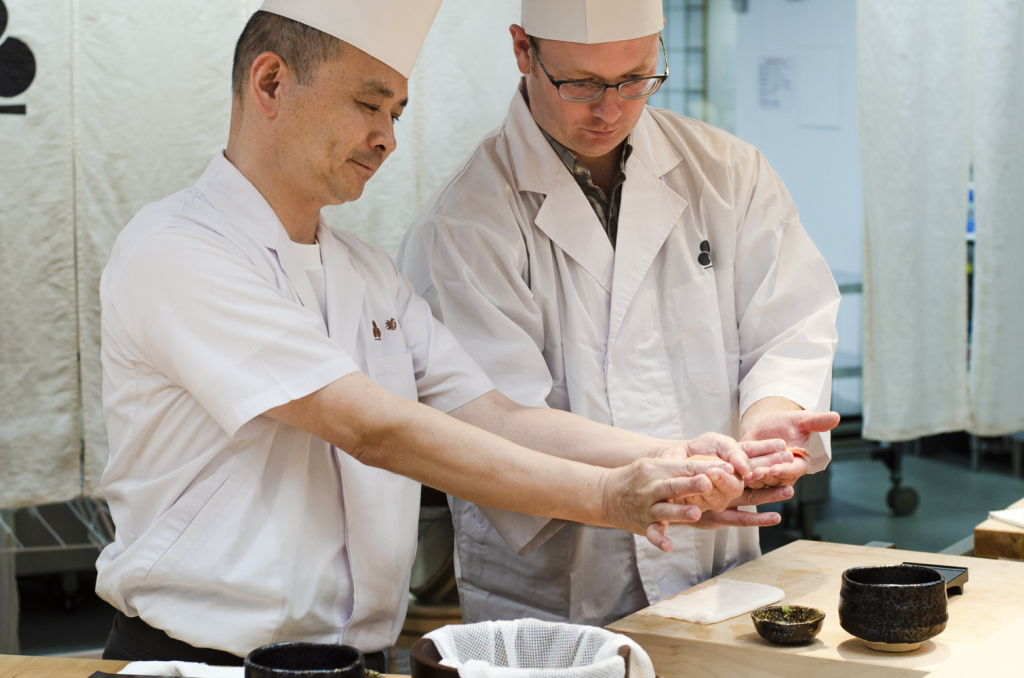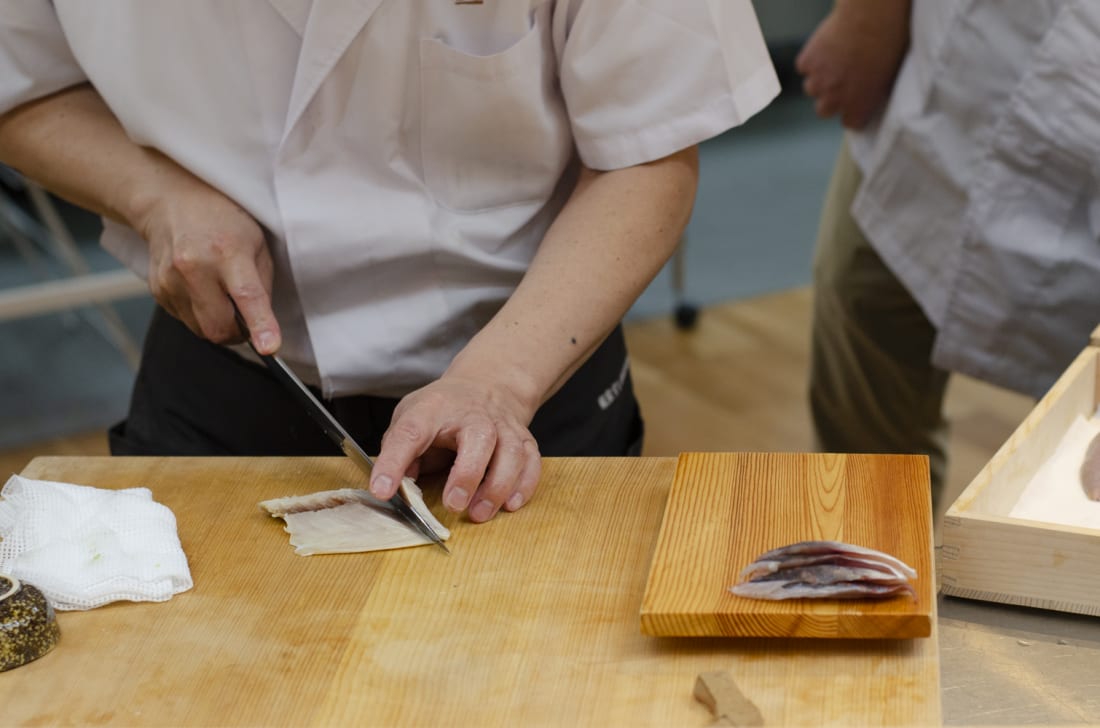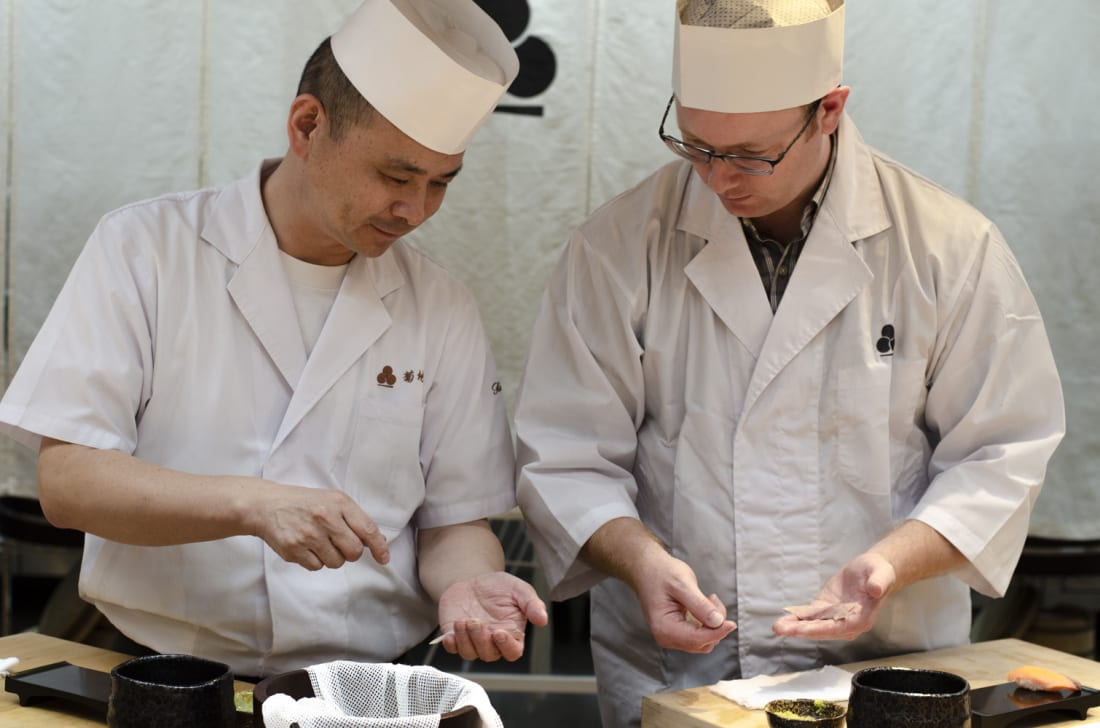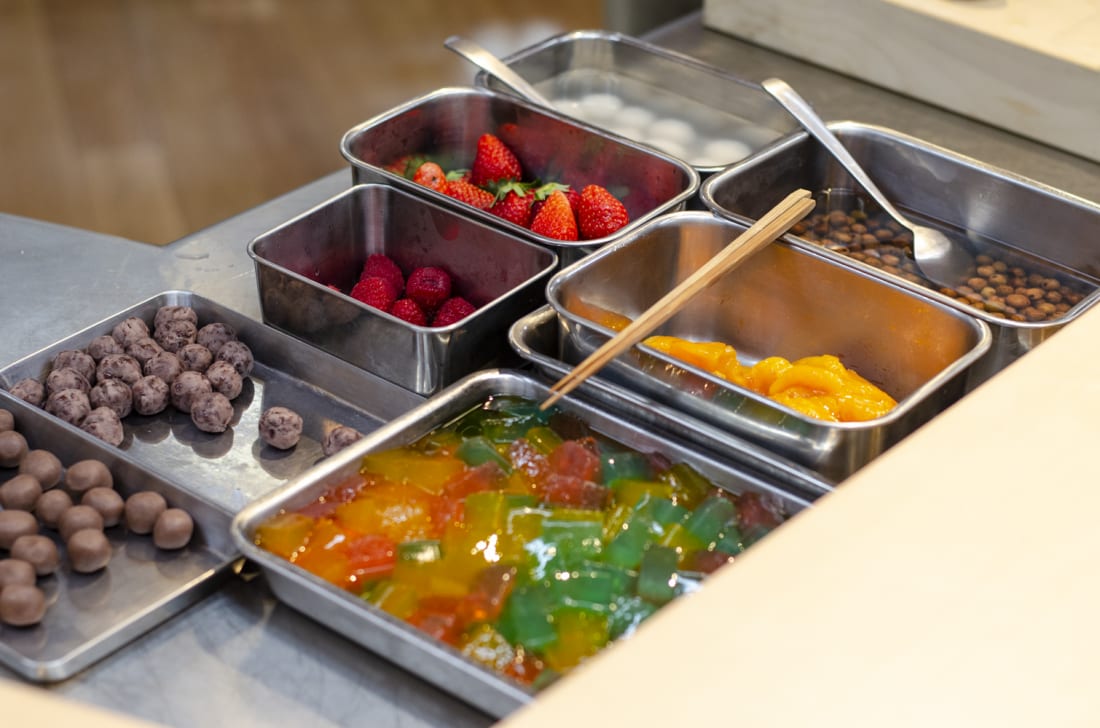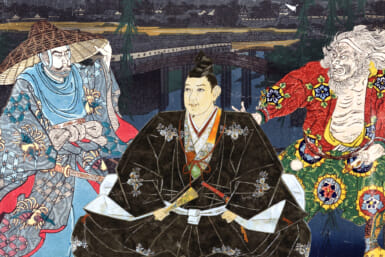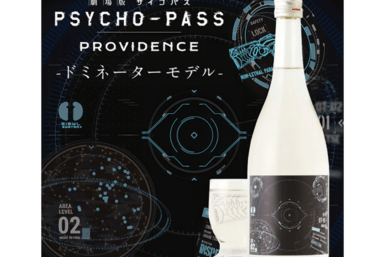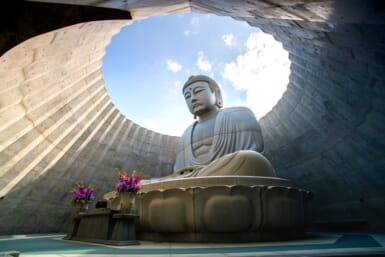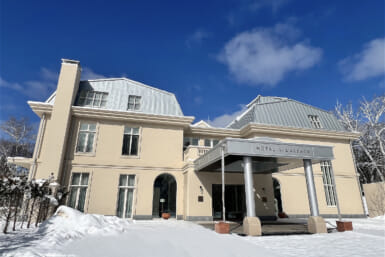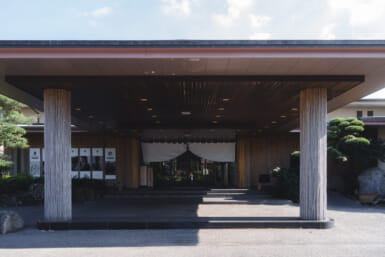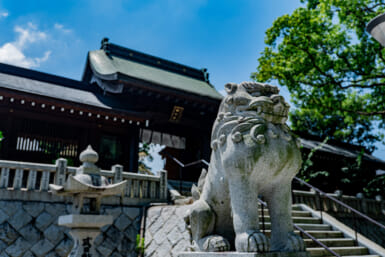I slip off my watch and slip on the same pristine white jacket and pointed cap worn by professional sushi chefs throughout Japan. The vast classroom at the Tokyo College of Sushi & Washoku is just as immaculate as the jacket, with a long wooden counter running the length of the area. Here is where the school’s students learn the authentic hospitality skills of Japan’s esteemed sushi chefs, with the counter designed so students can practice interacting with customers while slicing hunks of fresh fish.
The school, located just one stop from Shibuya Station, opened in 2016 and offers two-year and three-year courses to students (a total of 90 are currently enrolled – about 40 percent international) who want to master sushi and the Japanese traditional style of cuisine called washoku. Registered as an intangible cultural heritage by UNESCO, washoku is defined by careful preparation, attention to seasonal ingredients, respect for nature and the exquisite display of dishes.
As this meticulous style becomes more popular overseas, Tokyo College of Sushi & Washoku was launched with the mission to train chefs who will embody Japanese cuisine inside and outside of Japan. This summer the school is also inviting members of the public to free cooking sessions on July 30 and August 21 to experience sushi-making firsthand.
A Cut Above
To get a taste of what guests are in for, I had the opportunity to go behind the counter and receive a one-on-one lesson from the school’s experienced sushi chefs. Standing close by my side is instructor Kazuhisa Kikuchi, a 35-year sushi veteran. Chef Kikuchi pulls out a tray covered with four slabs of seafood – two types of mackerel, salmon and the shellfish called torigai.
Kikuchi is going to teach me how to prepare nigiri-zushi, the hand-pressed sushi you see in restaurants where the long, succulent slices of raw fish rest over rice. We start with the mackerel called aji. Using a long, gleaming sushi knife, Chef Kikuchi scales the fish with one smooth motion. He shows me that each individual slice of fish should be the width of his four fingers, and he cuts them just so.
Next we portion the rice. Kikuchi says each portion should weigh 8 grams exactly, and the affable sushi chef, using the middle and ring fingers of his right hand, rolls out the exact amount without measuring.
A Little Dab Will Do
Before constructing our sushi, we must first wet our hands, and even this exercise requires exact motions. We dip our right hand just to the big knuckle into a black and silver lacquer bowl. We bring our hand out, clench our thumb over the knuckles and then swipe water over the palm of our left hand.
We hold the ball of rice, the size of a large cocoon, in the palm of our right hand and place a slice of fish between the bottom two knuckles of our outstretched left hand. Then with our right index finger we take a swipe of fresh wasabi and dab it on the fish.
We then finalize the bite-sized sushi. We place the rice on the fish and then shape the rice into a square using precise motions with our thumb and index finger, then tamping down the top just so. For the final motion we roll the morsel down our fingers, and voilá – nigiri-zushi.
Room for Dessert
We do this three more times to complete the set before moving on to dessert – a summer fruit mix called anmitsu. This colorful creation consists of cubes of agar jelly, sweet red beans called azukimame, strawberries, raspberries, apricot and shiratama dango – the sweet, white mochi balls sold on sticks at summer festivals. The mixture is covered with a brown sugar reduction and topped with fresh mint.
“It’s so colorful it is nice to look at before you even taste it,” says Kikuchi.
Participants at the Tokyo College of Sushi & Washoku’s cooking event will learn these time-honored techniques and dishes directly from the school’s chefs before breaking out into small groups where the school’s students will assist with hands-on experience. Step behind the sushi counter, wear the white hat and make sushi just like Tokyo’s top chefs.
Learn more about the Tokyo College of Sushi & Washoku’s cooking events on July 30 and August 21 our events calendar.
[Sponsored Post]

